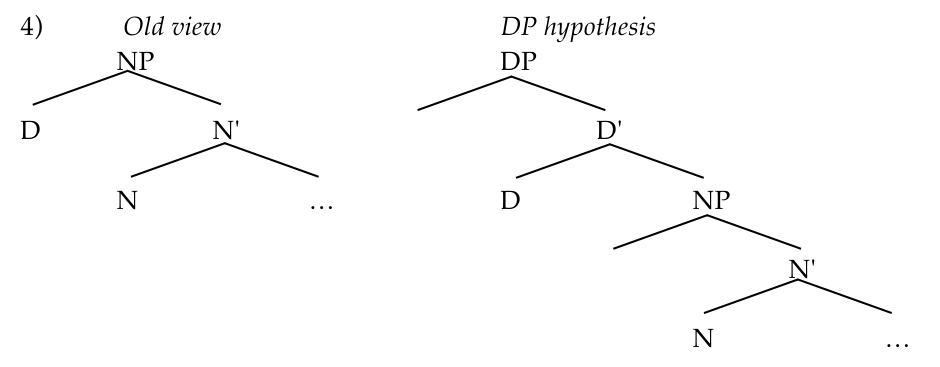
Note that specifiers have to be phrasal (YP). However determiners are not yet determined to be phrasal.
However they don’t appear to be phrasal:
*the that goat
Proposition: determiner phrase (DP).

Evidence:
- [the man standing over there]’s hat
- *the man’s standing over there hat
- *a building’s the roof
Hence we have the following proposed DP structure for possessives.
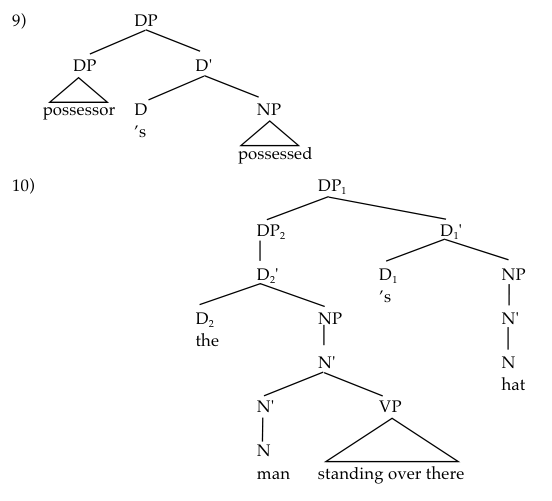
Claim 1: All clauses have CPs (complementizer phrases).
Claim 1.1: CPs at root/matrix clause have null complementizers.
Evidence: Analysis of yes/no questions.
- John has eaten.
- Has John eaten?
- Ar thit Sean? (Q fall John // Did John fall?)
(1) and (2) demonstrate English’s subject-auxiliary inversion. This is in complementary distribution with the occurrence of question complementizers such as “Ar” in Irish [see (3)].

This suggests that there is a null complementizer that the $T$ takes the place of upon inversion.
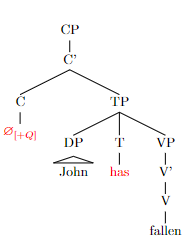
- Fabio asked if Claus had won.
- *Fabio asked (if had)/(had if) Claus won.

This is further supported by how when the complementizer “if” is used, subj-aux inversion would not be applicable.
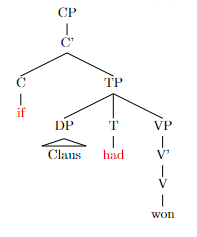
Same goes to show how you can conjoin a statement clause with a question clause.
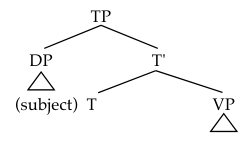
how to explain the difference between syntax of infinite and finite clauses?
how to explain conjunction of tensed verb phrase with auxiliary word phrase (cannot be former is VP and latter is NP)?
[He was really mad] but [has he been calmer since]?
Hypothesis 1:
T originally generates the tense affix, and it is lowered to the position of V.
T is a null [+
They do not show tense and agreement so do they form TP?
The infinitizer is the T.
Whtt about a string of verbs (multiple auxiliaries)? Only the first is the T.
See the .
[he had (null T) been wanting [to go there]]